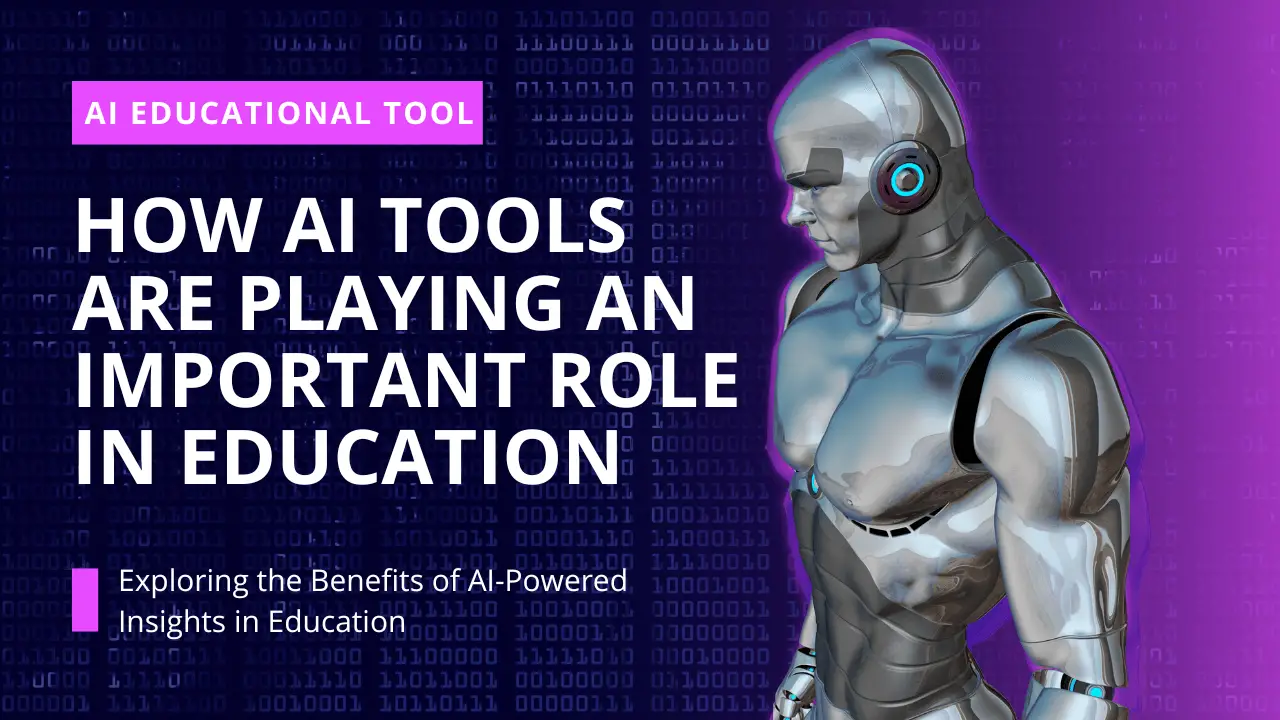AI is becoming increasingly prevalent in education, from smartphone apps to online courses. How many parents and students are eager to incorporate AI into their educational system? AI assists students in choosing the appropriate subject for them. Depending on their performances, the ideal career should be chosen. It can also serve as a continuous indicator of how they are progressively improving.
Artificial intelligence is used in education in countless different ways. It’s time for parents and students to participate more in this. AI technology is still developing and getting more complex. It has the ability to change how teachers and students are taught. The use of AI tools in education and their effects on the educational system will be discussed in this article.
What are AI Tools?
AI tools are computer programmes that carry out various tasks using artificial intelligence algorithms. These tools have the capacity to evaluate vast volumes of data and generate predictions from it. Several industries, including healthcare, banking, marketing, and education, can benefit from the deployment of AI solutions.
Artificial intelligence (AI) tools in education can be used to customise learning experiences and help with grading and assessment. One of the most common AI tool is paraphraser. By encouraging critical thinking, preventing plagiarism, and enhancing reading comprehension, AI paraphraser serve an important role in education.
Roles Of AI Tools to Improve Education System
One innovative method for tailoring the experiences of various learning groups, teachers, and tutors is artificial intelligence. The following is a discussion of how academic processes may be enhanced by the use of artificial intelligence tools:
1. Personalized Learning
The ability of AI tools in education to offer personalised learning experiences is one of its main advantages. AI systems are better able to comprehend each student’s particular learning preferences This helps to guarantee that every student receives the guidance and assistance they require to succeed academically.
By adjusting lessons to each student’s individual needs, AI increases learning effectiveness. With the use of the Knowledge Space Theory, many businesses train their AIs to identify knowledge gaps.
2. Enhanced Student Engagement
The use of AI tools to increase student engagement is another advantage. by adding interactive components like multimedia material and gamification. AI chatbots can create an enjoyable and stimulating learning environment for pupils.
Learning platforms with AI capabilities can support students in remaining motivated and interested in their studies. AI chatbots can help students learn at their own pace. Students may receive prompt feedback and encouragement from it.
Chatbots can provide students with personalised learning experiences, which can increase their self-confidence and drive them to learn more.
3. Create Smart Content
Digital courses: AI tools are capable of creating customizable digital learning interfaces. With the use of AI, materials like digital textbooks, study guides, and bite-sized lectures can be produced.
Visualisation of information: AI has the potential to enable novel information-perception techniques including visualisation, simulation, and web-based learning environments.
Updating content knowledge: The course content is created and updated with the aid of AI. Updating the knowledge and adapting it to suit various learning styles.
4. Advanced Tutoring Systems
Another useful AI technique for enhancing education is intelligent tutoring systems. These systems employ machine learning algorithms to pinpoint a student’s areas of weakness in order to offer tailored coaching and feedback to assist them to gain a better knowledge of the material.
Programs for independent study that are always growing consider the gaps that students need to fill in during individual courses. For the teachers, AI tutors are a huge time saver. Considering that they are not required to spend additional time explaining difficult subjects to students.
Students who seek further assistance in front of their friends won’t feel humiliated thanks to chatbots powered by AI.
5. Automated Grading and Assessment
The grading procedure is a way of giving a student-submitted assignment a grade. It is clear that grades are necessary for students in high school and college. The graded assignments assist students in appreciating the calibre of the work they have contributed.
Each assignment is examined and given a grade as part of the manual grading procedure. The quality of the writing and the support is the core idea of the task. Grading and assessment procedures can be automated with the use of AI tools. This gives pupils insightful feedback while also enhancing the effectiveness of the educational system.
6. Administrative Management
Applications regulated by AI can complete tasks without any help from humans. Processing and evaluating applications is made easier for management thanks to AI. Without human intervention, all procedures are carried out automatically.
One of the major issues facing educational organizations today is data security. There is a lot of sensitive information in educational institutions like schools, colleges, universities, and training facilities. Data loss and cyberattack risks are eliminated by using AI.
7. Gamification
By incorporating game aspects, AI-powered gamification can make learning more interesting and fun. Gamification can encourage kids to learn and aid in the development of crucial abilities like critical thinking and problem-solving.
Several educational environments can benefit from the usage of gamification. Such as from K–12 classrooms to higher education institutions and programs for professional training. Student progress can be monitored via leaderboards.
Students are inspired to study more and do better because of the competitive atmosphere they foster.
Wrapping Up
The use of AI tools can significantly enhance the educational system. From individualized instruction and increased participation to intelligent teaching approaches, automated grading, and assessment. AI can assist teachers in giving pupils a more productive and efficient educational experience.
In the end, using AI in education may not be a bad idea. Like any other component, AI has advantages and disadvantages that come with a price. If we are focusing more on the disadvantages than the advantages, it becomes challenging to advance and evolve.

